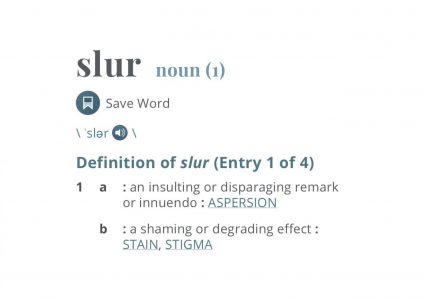
It’s appalling to find that at the outset of the year 2022, lactation professionals are still using their favorite slur.
Do they continue to use the slur because they think women are inherently untrustworthy?
Do they continue to use the slur because they refuse to learn from scientific evidence?
Or do they continue to use the slur because the alternative — admitting that breastfeeding has a significant failure rate — is unacceptable?
Consider the title of this paper in the forthcoming issue of Breastfeeding Medicine, Maternal Variants in the MFGE8 Gene are Associated with Perceived Breast Milk Supply:
A major reason why mothers undergo early, unplanned breastfeeding cessation is perceived inadequate of milk supply (PIMS).
The slur, for those who haven’t already guessed, is “perceived.”
Why is “perceived” a slur?
Imagine if the scientific literature were filled with papers referring to sexual harassment at work as “perceived sexual harassment”. The implication would be that women who report sexual harassment cannot be believed; they must have “misperceived” the interaction. Only others can judge what “really” happened because a woman’s judgment is not reliable.
Yet the breastfeeding literature is filled with papers referring to insufficient breastmilk as “perceived insufficient milk.” The implication is that women who report insufficient breastmilk cannot be believed; they must be “misperceiving” their babies cries of hunger. Since women’s judgment can be dismissed out of hand as unreliable, only breastfeeding professionals can judge what “really” happened.
It seems that lactation professionals are incapable of learning from their own literature. A major paper Evidence-Based Updates on the First Week of Exclusive Breastfeeding Among Infants ≥ 35 Weeks published in April 2020 could not possibly have been clearer:
Most, but not all, women experience lactogenesis II, referred to as “milk coming in,” by 72 hours post partum. In the Infant Feeding Practices Survey II, 19% of multiparous women and 35% of primiparous women reported milk coming in on day 4 or later…
Occasionally, a woman does not experience lactogenesis II and only produces small volumes of milk (prevalence 5%–8%).
Literally 1 in 3 first time mothers don’t begin to produce breastmilk until day 4 or later. Literally 1 in 20 mothers NEVER produces enough breastmilk to fully nourish an infant. Their “perceptions” are 100% reliable.
What’s particularly remarkable about the continued use of the smear is that there is a growing body of literature revealing that insufficient breastmilk is the result of genetics not perception.
There is even a biomarker for low supply. The paper The Relation between Breast Milk Sodium to Potassium Ratio and Maternal Report of a Milk Supply Concern reported that high Na:K ratio in breastmilk at day 7 was associated with maternal perception of low supply and with decreased breastfeeding rates at day 60.
Indeed the authors concluded:
…This result challenges the belief that milk supply concern in the context of exclusive breastfeeding is primarily maternal misperception.”
A 2018 paper, Milk cell gene expression of mothers with low breast milk production, found differences in gene expression between mothers with low supply and those with normal supply:
Preliminary findings suggest variations in cell signalling and function, examined through gene expression that might contribute to low milk production. Further investigations will potentially determine significant roles of key genes enabling successful human lactation.
Ironically, the newest paper — the one that continues to use the slur — examines the genetic basis of low milk supply.
…An SNP in the MFGE8 gene (rs2271714) may be associated with the risk of PIMS. Within our cohort, a polymorphism at this locus was associated with a sevenfold increase in PIMS risk, and heterozygotes displayed significantly shorter durations of exclusive breastfeeding (4.7 weeks)…
Why do breastfeeding professionals continue to slur women who report low supply when they know that 1. low supply is common, 2. there is a biomarker for low supply and 3. low supply has a genetic basis?
I suspect it is because they can’t bear to admit what the scientific evidence clearly shows: breastfeeding — far from being best for every baby — has a significant failure rate that puts babies’ lives at risk.

